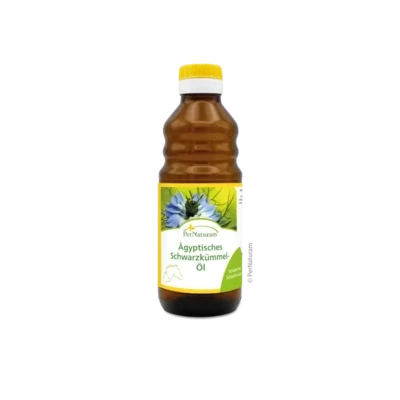Oils & Fats
What is the optimal supply of fatty acids for horses? Do horses need oils and fats at all?
In nature, horses have few opportunities to find high-fat feed. They do eat seeds and nuts, but as herbivores they are not adapted to pure fats. Exaggerated fat feeding therefore puts a strain on the metabolism, especially the pancreas.
On the other hand, fats are important for building cell membranes, for the nervous system and for absorbing lipophilic substances, e.g. fat-soluble vitamins. Therefore, it makes sense and is necessary to pay attention to the supply of essential fatty acids. Linoleic acid (LA, omega-6 fatty acid, doubly unsaturated) and alpha-linolenic acid (ALA, omega-3 fatty acid, triunsaturated). These two representatives of the omega-3 and omega-6 fatty acids are therefore the most important essential fatty acids (EFA). They have an influence on the skin functions (skin and coat formation), help with itching and eczema, inhibit inflammatory processes in the body and support the heart and circulation. EFAs are important components of cell membranes (cell envelopes) and serve to maintain membrane functions, i. H. the health of the cells and ultimately of the entire metabolism!
It is not only the absolute, quantitative fat intake via the feed that is decisive, but also the ratio of omega-6 to omega-3 fatty acids in the food (this also applies to human nutrition in all respects!).







